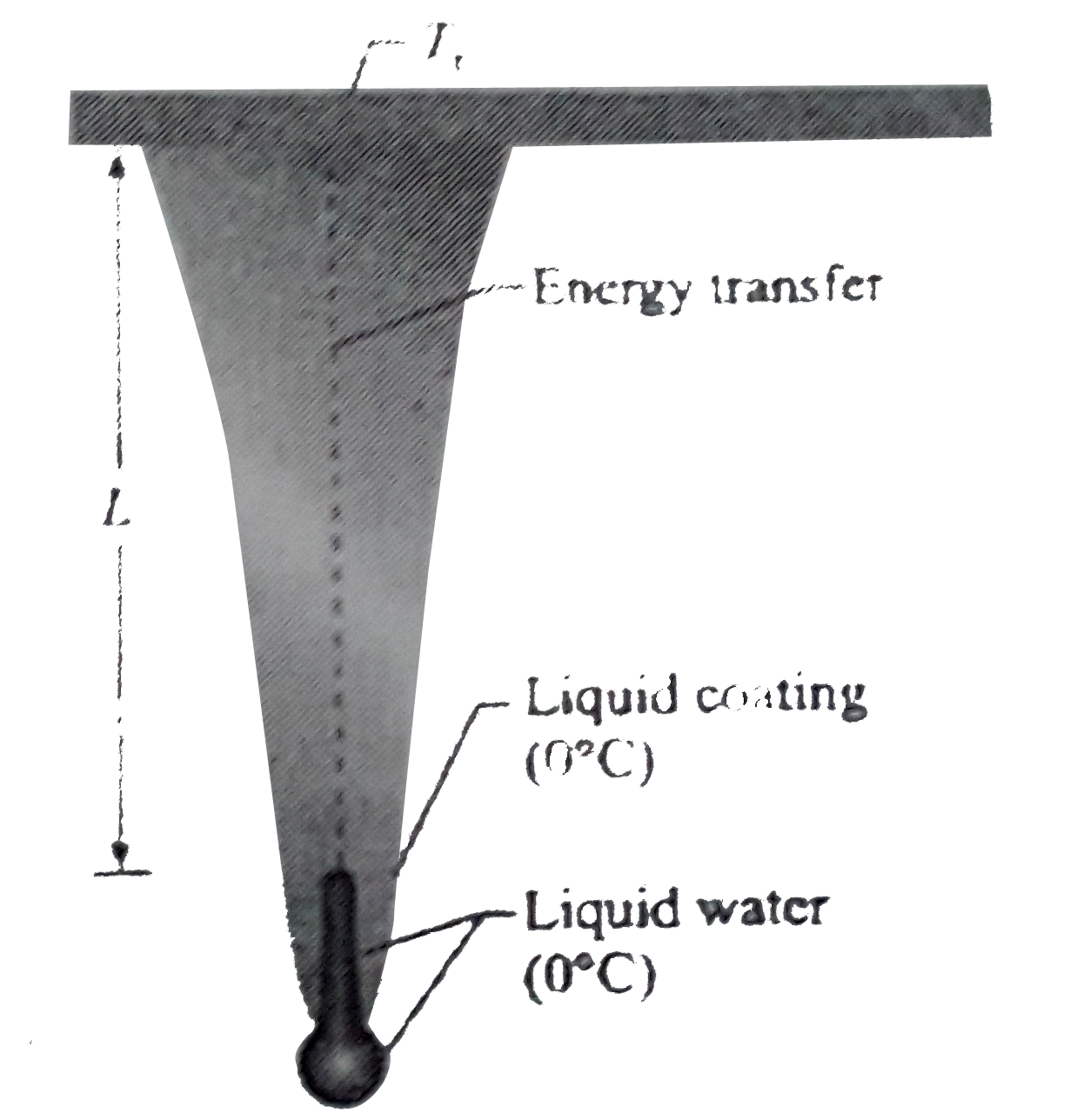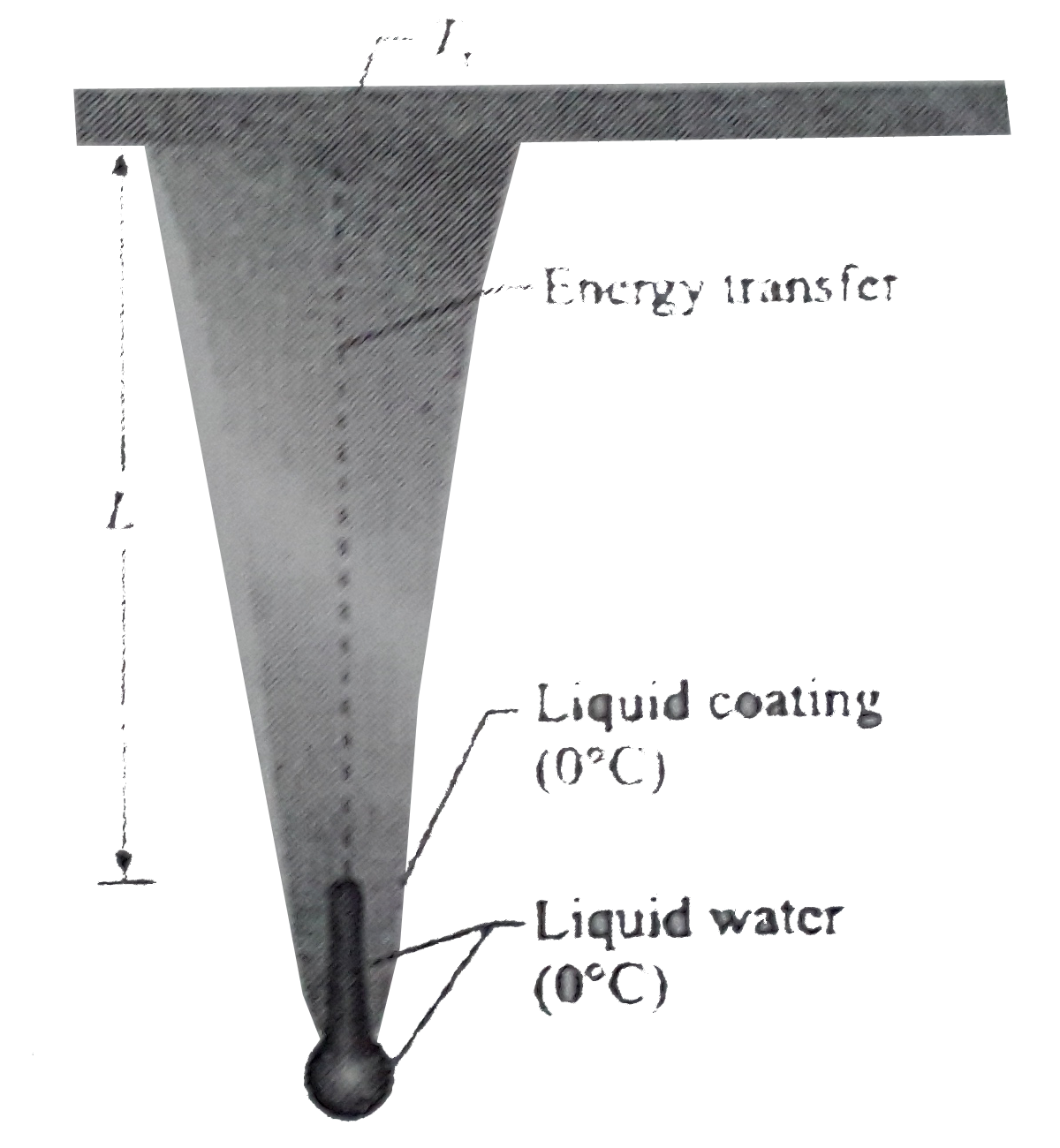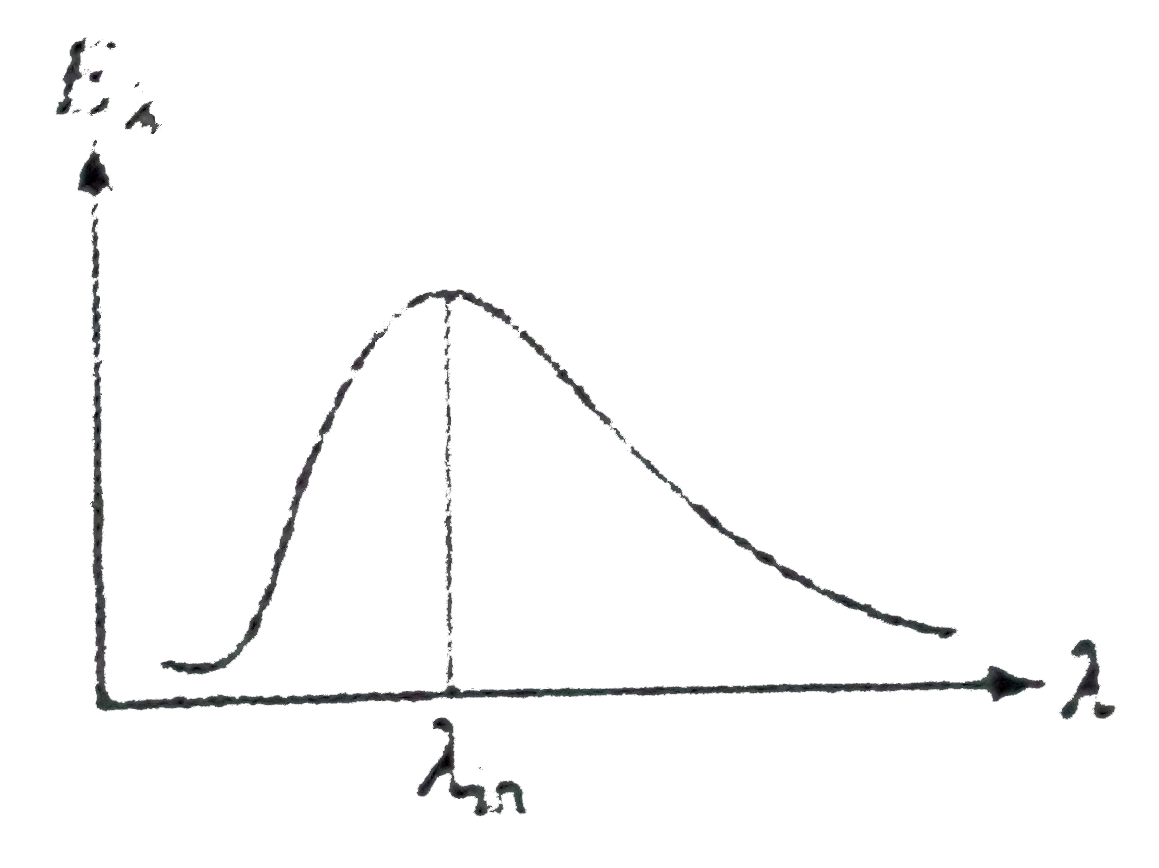Complete Solutions to Comprehension type of chapter TRANSMISSION OF HEAT of Class 11 book with complete answers and questions
| Class 11 | PHYSICS |
| Chapter | TRANSMISSION OF HEAT |
| CENGAGE PHYSICS DPP | Comprehension type |
| Number Of Questions | 4 |
| Academic Year | 2023-24 |
Liquid water coats an active (growing) icicle and extends up a short, narrow tube along the central axis. Because the water-ice interface must have a temperature of `0^(@)`C, the water in the tube cannot lose energy through the sides of the icicle or down through the tip because there is no temperature change in those directions . It can lose energy and freeze only by sending energy up(through distance L) to the top of the icicle, where the temperature `T_(r)` can be below `0^(@)`C. Take L=0.10m and `T_(r)`=`-5^(@)`C.Assume that the central tube and the upward conduction path both have crosse-sectional area A=0.5`m^(2)`. The thermal conductivity of ice is 0.40 W`//mcdotK`, latent heat of fusion is `L_(F)=4.0xx10^(5) J//K` and the density of liquid water is 1000 kg`//m^(3)`.

The rate at which mass converted from liquid to ice at the top of the central tube is09:26View SolutionLiquid water coats an active (growing) icicle and extends up a short, narrow tube along the central axis. Because the water-ice interface must have a temperature of `0^(@)`C, the water in the tube cannot lose energy through the sides of the icicle or down through the tip because there is no temperature change in those directions . It can lose energy and freeze only by sending energy up(through distance L) to the top of the icicle, where the temperature `T_(r)` can be below `0^(@)`C. Take L=0.10m and `T_(r)`=`-5^(@)`C.Assume that the central tube and the upward conduction path both have crosse-sectional area A=0.5`m^(2)`. The thermal conductivity of ice is 0.40 W`//mcdotK`, latent heat of fusion is `L_(F)=4.0xx10^(5) J//K` and the density of liquid water is 1000 kg`//m^(3)`.

At what rate does the top of the tube move downward because of water freezing there?05:33View SolutionThe radiations emitted by the sun are analyzed and the spectral energy distribution curve is plotted. as shown. The radius of the sun is `R`, the earth is situated a distance `'d'` from the sun. Treat the sun as perfectly black body which radiates power at constant rate fill till its store of hydrogen gets exhausted. (Stefan's constant `= sigma`, Wien's constant `=b`, speed of light `=c`)

Assume the sun produces energy only by nuclear fusion of hydrogen nuclei and the fraction of nuclear mass of hydrogen that can be converted to energy is `eta`. How long will the sun keep on emittied the energy if the mass of hydrogen at present in Sun's core is m?04:52View SolutionThe radiations emitted by the sun are analyzeed and the spectral energy distribution curve is plotted. as shown. The radius of the sun is `R`, the earth is situated a distance `'d'` from the sun. Treat the sun as perfectly black body which radiates power at constant rate fill till its store of hydrogen gets exhausted. (Stefan's constant `= sigma`, Wien's constant `=b`, speed of light `=c`)

If the earth is at a distance `'d'` from the sun the intensity of light falling on the earth (called solar constant S) is03:08View Solution
Comprehension type questions and complete solutions for chapter TRANSMISSION OF HEAT of CENGAGE PHYSICS (ENGLISH) of Class 11
